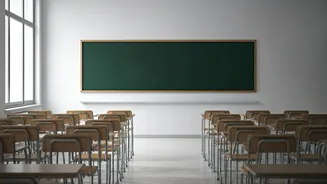Curriculum: Foundation and Goals
The curriculum serves as the bedrock of any educational program, dictating what students learn and how they learn it. Designing a curriculum involves defining
clear learning objectives, selecting appropriate content, and structuring it logically for effective instruction. This includes the determination of the skills, knowledge, and values students are expected to acquire at each stage. The curriculum should also be regularly reviewed and updated to ensure it remains relevant and responsive to the evolving needs of society and the individual student. A well-designed curriculum not only imparts subject-specific knowledge but also fosters critical thinking, problem-solving abilities, and other essential skills that will benefit students long after they leave the classroom. The main objective is for children to gain the knowledge and skills they need.
Effective Teaching Strategies
Effective teaching is more than just imparting information; it's about engaging students and creating a stimulating learning environment. This involves a range of instructional methods, such as lectures, discussions, group projects, and hands-on activities. A good teacher adapts their methods to suit the different learning styles and needs of their students, incorporating technology, multimedia resources, and other tools to enhance engagement and comprehension. Teachers also need to nurture a strong relationship with their students and create a welcoming classroom. The key is to build a supportive atmosphere where learners feel safe to take risks and ask questions. Providing clear, constructive feedback and encouraging self-reflection also help students learn. This feedback allows students to learn and adapt better to their own abilities.
The Significance of Assessment
Assessment is a critical component of the education system, providing insights into student progress and informing instructional adjustments. Different assessment methods, including tests, quizzes, projects, and presentations, offer various ways to evaluate learning outcomes. Assessments should be aligned with the curriculum objectives and designed to measure not only knowledge recall but also critical thinking and application skills. Regular assessment helps teachers understand student strengths and weaknesses, allowing them to tailor their instruction to address specific areas of need. Additionally, assessment results can inform curriculum revisions and ensure that learning goals are being met. Assessments also help parents understand their child's progress.
Leadership's Role in Education
Educational leadership plays a pivotal role in shaping the learning environment, setting the tone for the entire school or educational institution. Effective leaders establish a clear vision and goals, fostering a culture of collaboration, innovation, and continuous improvement. They create a supportive environment for teachers and staff, providing the resources and professional development opportunities they need to excel. Strong educational leaders also promote a positive school climate, fostering respect, inclusivity, and a shared sense of purpose. They also act as advocates for their students, parents, and community, striving to ensure that all students have access to high-quality education. A strong leader helps to create a stable environment where teachers can teach.
Creating a Supportive Environment
Beyond the formal structures of curriculum, teaching, and leadership, the environment in which learning takes place has a significant impact on students' success. A supportive environment is characterized by a positive, inclusive atmosphere where students feel safe, respected, and valued. This includes fostering strong relationships among students, teachers, and parents, as well as providing access to resources like counseling services, extracurricular activities, and technology. A supportive environment is not just about providing resources, but also about creating a culture that values diversity, promotes open communication, and encourages students to take risks and learn from their mistakes. Schools that offer a safe and supportive environment contribute to a higher quality of education.







